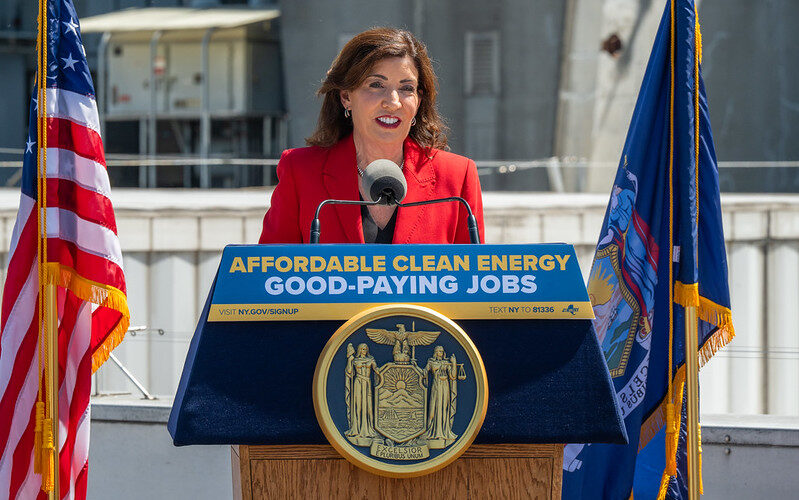In September, the New York State Public Service Commission approved a critical piece of Gov. Hochul’s long-term energy strategy — expanding local natural gas supply. The decision marks a pivotal step in her broader effort to drive down energy costs for families and businesses across the Empire State.
As a former member of Congress who represented Brooklyn for three decades and served on the House Energy and Commerce Committee, I understand how energy issues affect communities of color. That’s why I support the governor’s comprehensive energy plan.
In the past four years, we have seen electricity rates increase from 18.4 cents per kilowatt hour to 27 cents, with natural gas rising nearly 8% with no end in sight. Recently, Con Edison proposed another rate hike, estimated to cost the average ratepayer almost $400 a year. One report noted that the compound annual growth rate (CAGR) for residential electricity prices in New York skyrocketed to 6% per year since 2021, compared to 1% per year in the previous decade.
As energy costs keep rising and New Yorkers face the uncertainty of President Trump’s trade wars, it’s more crucial than ever to get this balance right. Hochul’s support for an “all of the above” energy policy will make electricity more affordable and help meet the increasing demand.
Too often, policymakers ask us to choose between today’s reliability and tomorrow’s sustainability without considering costs to consumers. Hochul’s balanced approach includes multiple energy sources, such as renewables, nuclear power, and, yes, cleaner natural gas. It’s a sensible approach that will help New York families, ratepayers, and small business owners.
The Progressive Policy Institute recently released a report that confirms what many of us have long known: Black and Latino households spend a significantly greater share of their income on energy costs compared to white households. This “energy burden” forces tough decisions and deepens economic inequality in neighborhoods like Brownsville, East New York, and across our state.
It is particularly heartening to see labor organizations like the Transport Workers Union International embracing the governor’s approach. As a representative of a large swath of working-class New Yorkers, union leaders understand that affordable, reliable energy is the foundation of both economic opportunity and good-paying jobs.
Expanding energy supply cannot be ignored, especially in light of the growth of artificial intelligence, which has raised growing concerns about our electrical grid. Data centers are using a significant amount of power, with the New York Independent System Operator (NYISO) warning that our grid is under enormous strain. We can’t afford to gamble with blackouts, especially in the neighborhoods least equipped to handle them.
Some argue the answer is to simply regulate AI more heavily so that energy demand declines. While certain AI use cases should be restricted for unrelated public policy reasons, reflexively banning AI altogether in the name of restoring energy affordability is senseless as it will just makes consumers pay more elsewhere.
Take, for example, the vital role that algorithmic pricing technology plays in the housing and car industries. This AI technology has created what effectively amounts to a real-time Kelley Blue Book, allowing everyone from families needing a new apartment to mothers looking to purchase used cars to access market trends. When overall demand for those items declines, this algorithmic technology is responsible for convincing sellers to drop their prices quickly, leading to cheaper goods.
So, while banning AI outright might reduce our nation’s energy demands, it would also raise consumer costs elsewhere. The governor gets this. That is why she is instead choosing to embrace an all-of-the-above energy approach that gives New Yorkers the best chance at stable, affordable energy.
We also can’t afford to forget that reliability saves lives.
It was almost three years ago, in 2022, that Winter Storm Elliott almost required operators to begin implementing rolling blackouts. It was natural gas, though under pressure, helped stabilize the grid and prevent disaster.
This is also about jobs and securing investment for our communities. Black and brown communities must benefit from a clean energy transition — not be sidelined by it. A just energy transition must lift everyone.
Hochul is showing what Democratic leadership looks like when it listens to working families. Her policies are offering working families the best hope at establishing a reliable and cheaper electricity delivery system for all New Yorkers. It is the commonsense and balanced approach that should serve as a model, not only for New Yorkers, but for the rest of the nation as well.
Towns is a former member of Congress from Brooklyn.








